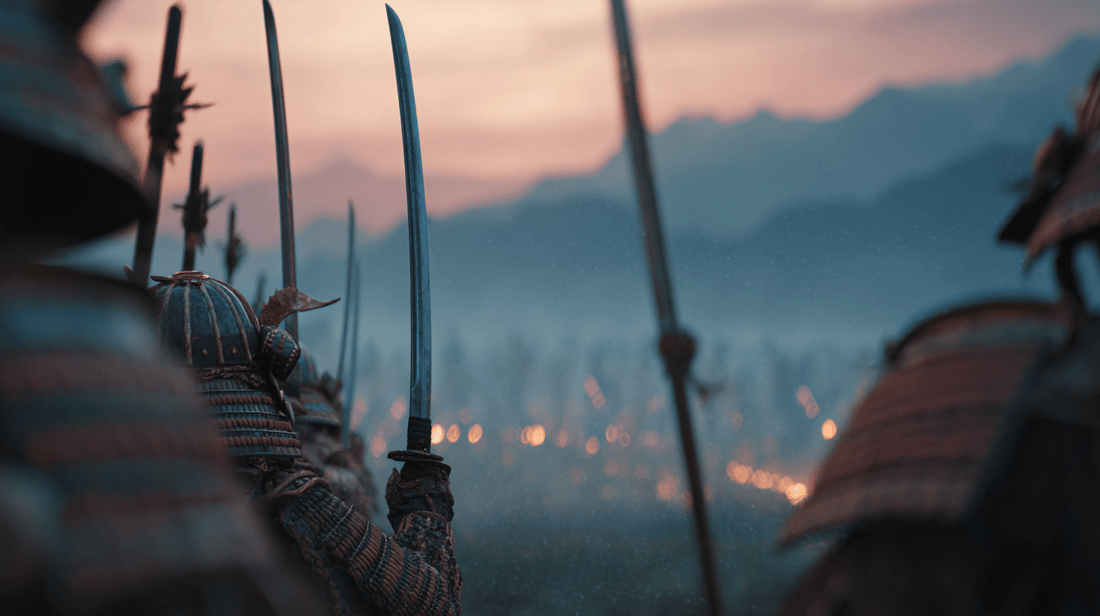
Katana Origins – How Japan’s Legendary Sword Was Born
Share
The katana origins trace back over a thousand years, emerging as a symbol of craftsmanship, martial prowess, and spiritual philosophy in Japan. This iconic weapon of the samurai is more than just a sword—it encapsulates a rich history and cultural legacy that continues to fascinate enthusiasts and historians alike.
The Early History of the Katana
The creation of the katana was a gradual evolution influenced by both domestic innovation and foreign weaponry. During Japan’s Heian period (794–1185), warriors initially used straight swords known as chokutō. However, as battlefield tactics evolved, so did the need for a more effective weapon.
From Chokutō to Curved Blades
- The introduction of cavalry warfare required a sword that could be drawn quickly and used effectively on horseback.
- Blade curvature allowed for faster, more efficient cutting motions.
- This design led to the emergence of the tachi, a predecessor to the katana.
The Kamakura Period and Technological Advancements
During the Kamakura period (1185–1333), Japan saw significant improvements in sword-making techniques. Renowned swordsmiths like Amakuni Yasutsuna are credited with pioneering methods that laid the foundation for the katana’s design.
The Samurai and the Rise of the Katana
As the samurai class rose to prominence, so did the katana’s status as a key element of their identity. Unlike previous swords worn suspended edge-down, the katana was worn edge-up through the belt, enabling faster draw and strike capabilities in a technique called iaijutsu.
Spiritual and Symbolic Significance
To the samurai, the katana was more than a weapon; it represented honor, discipline, and the warrior’s soul. Swordsmiths performed purification rituals before forging, embedding spiritual elements into their craftsmanship.
Influence on Bushido
The katana was integral to Bushido, the samurai code of conduct. Its values—loyalty, courage, and honor—were symbolized by the blade itself.
The Craftsmanship Behind the Katana
One of the defining aspects of the katana origins is the complex forging process that combines functionality with artistry. Traditional katana are made using tamahagane, a type of Japanese steel produced in a clay furnace called a tatara.
Key Steps in Katana Creation
- Smelting Tamahagane: Producing high-carbon steel with varied hardness.
- Folding: Repeatedly folding the metal to remove impurities and enhance strength.
- Differential Hardening: Applying clay to control cooling rates, resulting in a hard edge and flexible spine.
- Polishing and Mounting: Finishing the blade to perfection and fitting it into a personalized scabbard (saya).
Comparison of Katana and Predecessor Blades
| Feature | Chokutō | Tachi | Katana |
|---|---|---|---|
| Blade Shape | Straight | Curved (edge-down) | Curved (edge-up) |
| Wearing Position | Suspended from belt | Edge-down on waist | Edge-up in obi (belt) |
| Time Period | Pre-10th century | 10th–13th century | 14th century onwards |
Global Influence and Modern Relevance
Today, the katana continues to captivate martial artists, collectors, and pop culture fans. Its influence is seen in anime, movies, and even modern tactical gear. Authentic reproductions such as the Rengoku Kyojuro Katana or the Ichigo Bankai Katana blend traditional aesthetics with high-carbon steel for practical use and display.
For collectors, accessory options like classic display stands or a katana cleaning kit help maintain both the visual and functional integrity of their blades.
Explore Katana Collections
If you’re inspired by the rich history of katana origins, explore the full range of available swords at Katana America’s katana collection. You’ll find high-quality replicas from historical designs to anime-inspired models such as the Tanjiro Kamado Katana.
For anime enthusiasts, the Anime Swords Collection offers a wide variety of fan-favorite designs made with 1060 carbon steel for durability and authenticity.
External Resources for Further Reading
- Encyclopedia Britannica – Katana
- Nippon.com – The Art of Japanese Swordsmithing
- Sword Encyclopedia – Katana History and Use
- Met Museum – Japanese Arms and Armor
Conclusion: Honoring the Legacy of the Katana
The katana is more than a relic of the past—it’s a living symbol of Japan’s artistic, cultural, and martial heritage. Whether admired for its craftsmanship or revered as a historical artifact, the origin of the Japanese sword continues to inspire awe across the world.
Ready to explore your own connection to samurai sword origins? Visit Katana America and browse our curated selection of authentic and anime-inspired katanas to honor this legendary legacy.
